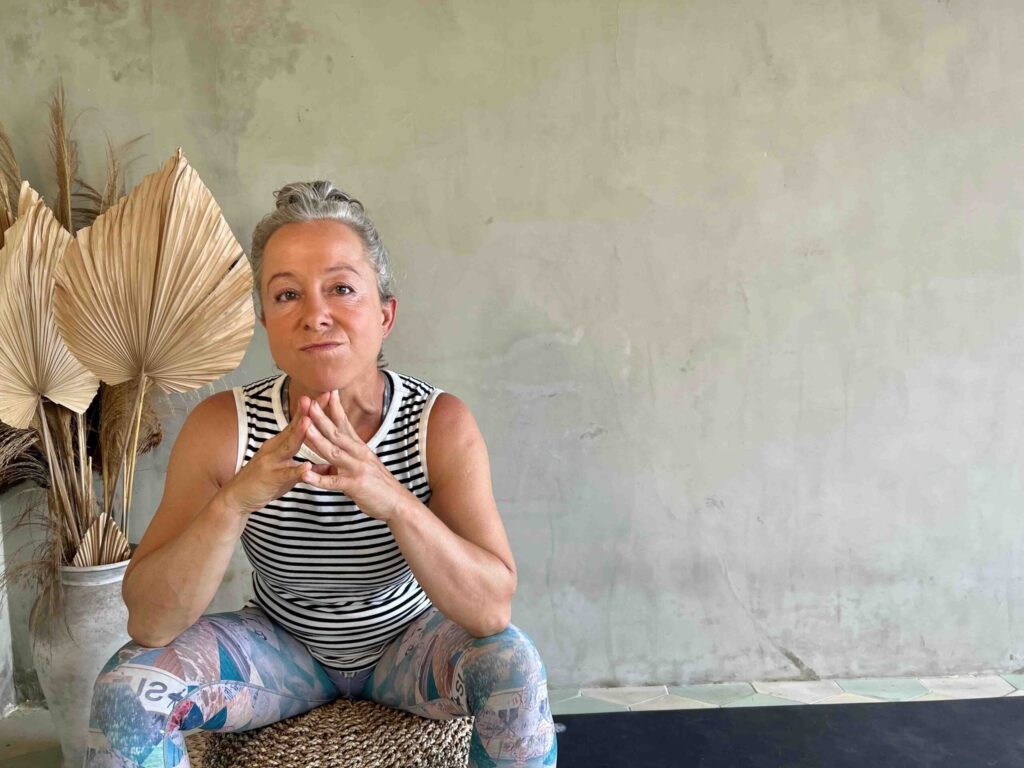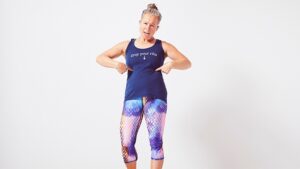UPDATED: January 29, 2025
A 2006 report by the Centers for Disease Control and Prevention’s (CDC) National Center for Health Statistics found that 1 in 4 U.S. adults experienced pain that lasted a full day during the previous month and 1 in 10 had pain that lasted a year or more. And in the 65 and older population the numbers were even higher, with one-fifth of adults reporting pain that lasted more than 24 hours and three-fifths having pain that lasted more than one year!
With stats like that it’s no surprise that lots of people come to me because they want to troubleshoot a particular pain issue: feet, knees, hips, back pain, neck pain, shoulders, elbows & of course pelvic floor stuff.
While it’s always hard for me to provide specific advice without directly working with you, here are general guidelines I use when I’m addressing pain or injury in the body.
Of course this isn’t medical advice, consider it more of a framework for thinking about how you can resolve or work with your own body stuff.
And remember, it’s always important to consult with your medical provider and do what makes sense to you.
Understanding How Pain Works
Movement work can be very helpful for pain but it’s not the whole story. Pain is complex – things like stress, anxiety, personal history, sleep patterns and environment can all affect how we perceive and experience pain.
Pain has traditionally been viewed on a purely biological level – an injury causes pain and a signal is sent to the brain. However, it is now widely accepted that pain is not just physiological, but rather, contextual and that psychosocial factors (like the mind-body connection) play a significant role in the perception of pain.
This approach to pain – known as the Biopsychosocial Model – is contextual.
Two people with the same exact injury may experience entirely different levels of pain depending on what’s going on with them mentally and emotionally.
For example, ‘bone on bone’ issues in our joints sound really bad, right? And for some people that correlates with lots of pain. In contrast, I was told I was ‘bone on bone’ in my left TM (jaw) joint about 7 years ago and I have zero pain.
Because of this it’s important to consider movement as just one (of many) things to consider.
However, movement IS still a big factor to consider. In fact, current research suggests that physical activity can be effective in reducing pain and can also lower the risk for developing chronic pain.
Movement has many benefits, including but not limited to:
👉 helps restore function (which often helps reduce inflammation)
👉 provides new patterns so overuse/underuse issues can change
👉 heals damaged tissue (again, not always a source of pain but it can be)
👉 gives our brain novel inputs which brains love
(If you’re looking for a deeper dive into this topic, check out Todd Hargrove’s book, Playing With Movement.)
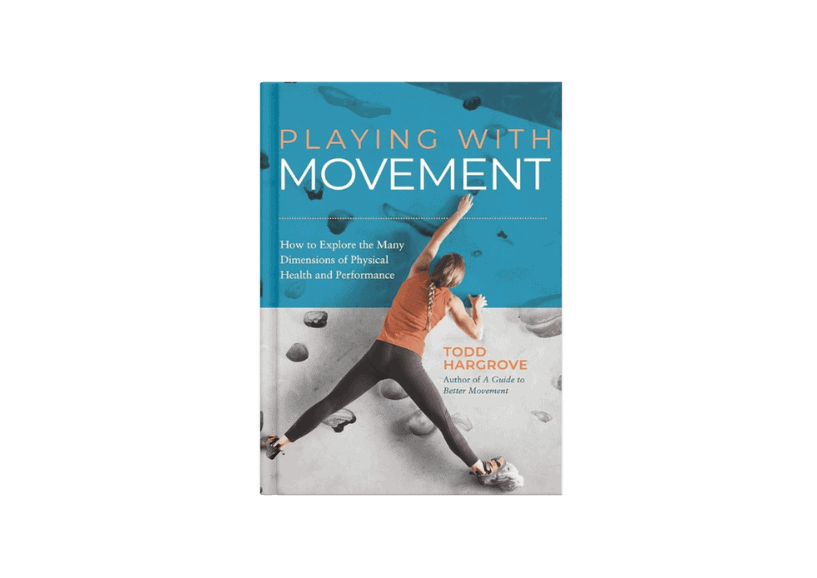
For now, let’s dive into some things you can do when you’re in pain.
14 Ways To Troubleshoot Pain
#1 Improve Function
Moving your body helps build muscle strength and prevents muscular atrophy. By trying to improve the function of the part that’s hurting (and the parts that are connected) and working within a fairly pain free range, you can slowly and safely build up your strength and mobility (which decreases pain). For example, when I’m working with someone with painful knees, I want to make sure their hips, feet and ankles are moving well as well as considering how to improve strength and mobility of their actual knee joint.
#2 Think Upstream And Downstream
Have you ever woken up with pain in a particular area and thought – “Must’ve been X that I did the other day.” The general belief is pain in a specific area means you did something to hurt that same area.
However, the origin of pain can be different from where we’re actually experiencing pain and indicative that another area further upstream or downstream isn’t actually moving well. For instance, like I said above, knee stuff is very often the result of foot stuff or hip stuff.
Because the body is an interconnected system, when one part isn’t working right, other parts often ‘take up the slack’. This is known as a compensation pattern. Compensations can work well for a long time but in the end, they aren’t as efficient or as effective as moving the way you’re supposed to move! Limited shoulder mobility often shows up as back pain, and limited hip mobility can show up as back pain, SIJ pain or pelvic floor issues.
In short, it’s important to improve the function & mobility of the parts of your body that interact with the parts that hurt!
#3 Put On Your Detective Hat
Dealing with pain requires you to be your own Sherlock Holmes. When you think like a detective you can look for clues and start to analyse your own body patterns. By taking a closer look at how you habitually move, you can put together the pieces to better understand why you might be in pain and this is often how you’ll resolve things.
For instance, you may find that the way you stand is why your feet hurt – changing how I stood is what I credit for resolving my plantar fasciitis.
(This is how you figure which ‘upsteam’ and ‘downstream’ parts need some movement help!)
#4 Overall Joint Mobility (CARs)
It’s always a good idea to work on improving your overall joint mobility & function. Controlled Articular Rotations (CARs) are one of the best ways to give your whole body some daily movement love. Simply doing whole body CARs helps many people feel better quickly, even though they’re non-specific.
CARs also help you become a better ‘detective’ – because they’ll help you notice which parts of your body are moving well and which ones are sticky. For example, you may notice that whenever you try to move your arm above your head, it forces you to lift your ribcage. This is how your spine can compensate for your shoulder, and might explain some of your mid-back tightness.
Even if CARs don’t resolve your particular problem, you’ll get plenty of other wins by establishing a regular CARs practice (read more about the benefits of CARs here).
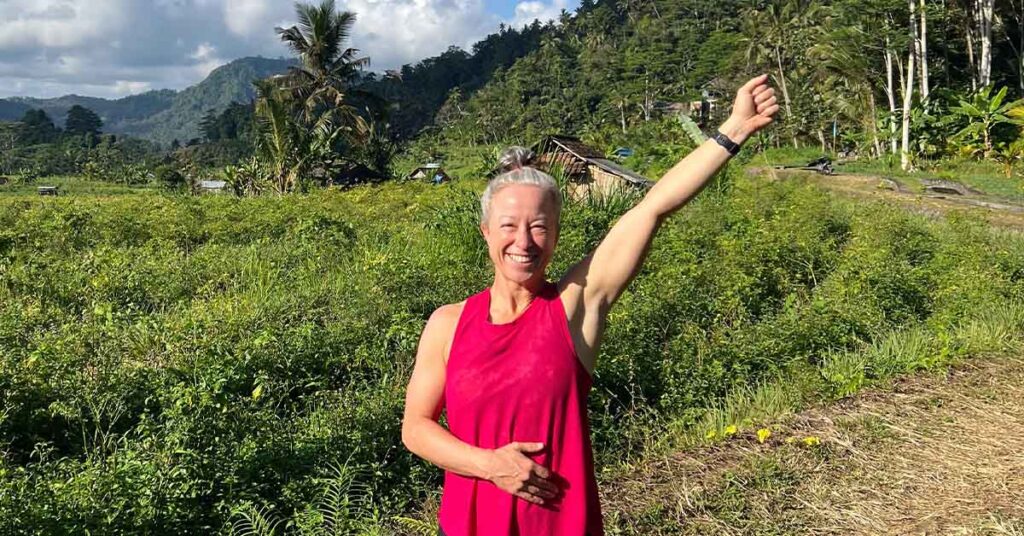
#5 Be Relentless
Remember that old saying, “If at first you don’t succeed, try, try again?” Well, that’s particularly relevant when trying to troubleshoot body pain. If one attempt or method doesn’t work, keep exploring and trying new movement approaches – answers come with time and patience.
(Although also make sure you don’t jump around too fast – it can take time and practice for movement solutions to help).
#6 Be Curious
If things don’t make sense, keep asking questions. (And refer back to #5.)
#7 Be Kind, Gentle & Optimistic
It’s a great idea to approach moving your body with a sense of nurturing and caring. Remember that context matters – pain is scary and frustrating but the fear and frustration itself can trigger pain.
Doing exercises that are painful isn’t always a bad idea (surprisingly) but sometimes it is. So I generally recommend working in pain free ranges and modifying any activities that seem to be a cause of your pain (e.g. if you have plantar fasciitis it might not be ideal to be running marathons until you resolve it).
In addition to approaching your movement practice with gentle nurturing and self care, you can try other tools as well. For example, finding a support network, exploring meditation or breathwork, trying apps like Curable or working on your self talk can all go a long way.
Also remember that our bodies are amazing at healing!! With time and hard work, you truly can enjoy incredible results. Yes, pain can be scary and incredibly frustrating! But you are strong and your body is incredible and you CAN get through this!!
#8 Seek Professional Help
Movement work like what I teach is big picture and it can be really helpful but if you have ongoing issues that don’t resolve, absolutely see a great clinician, PT or other practitioner!
I’m a believer in having a team! I’ve worked with tons of PTs and movement coaches, as well as doing many classes and courses both online and in person, in my personal journey and the combination has been really powerful!
Finding the right professional can do wonders for addressing and treating pain. For anything joint related, I recommend looking for manual therapists who are trained in the FRC mobility system (the basis of the CARs I teach in my Joints For Life program) because it’s so effective for improving function. For anything foot related, I recommend looking for someone who prioritises conservative care and natural solutions like foot strength instead of orthotics and surgery.
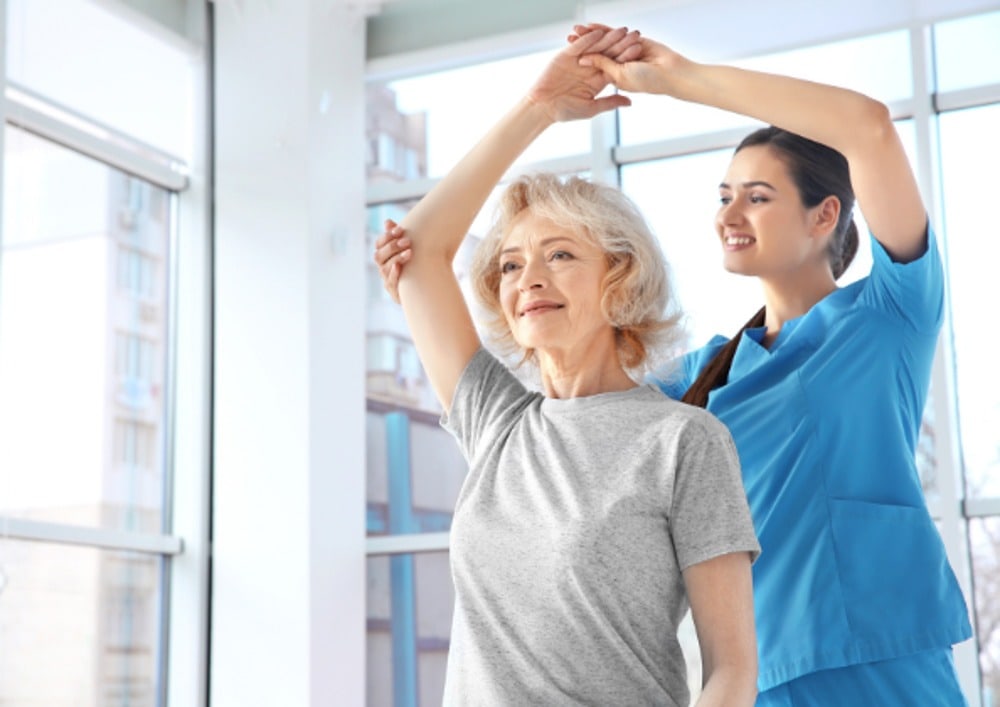
#9 Don’t Rely Solely on Manual Therapy or Massage
I don’t recommend that you rely solely on manual therapy such as massage or going to a chiropractor. They may have a role to play, but frequently you end up spending a lot of money on treatments that don’t actually address the root cause or create long term results.
Prioritise active movement and mobility work – it’s going to give you more bang for your buck and more long-term improvement when it comes to pain issues. If you decide to see a manual therapist, try to find someone who will give you movement ‘homework’ – and then DO YOUR HOMEWORK. Yes, I know it’s boring. So is being in pain.
#10 Move More
Movement can be medicine – it’s how our bodies heal and create healthy tissue.
Continuing to move when you’re in pain not only has positive physical effects, but can also improve your mental and emotional state.
Obviously don’t go out and do something that’s going to leave you in agony, but try to find a type of movement that can work for you. For example, when my right foot was at its worst, I cut down my walking and I increased my studio practice time on other body parts.
Staying moving will help your body be healthier and less inflamed and help your emotional state – there’s almost always some sort of movement option to try!
#11 Carefully Consider Surgical Options
Consider surgery with care. Surgery can be really helpful for some issues and sometimes it isn’t (back surgery for instance is notoriously unhelpful). Surgery, obviously, is a final decision – you can’t change your mind afterwards, and it changes your body so you then have to work with the consequences.
I recommend working on your movement patterns before deciding to have surgery if possible. This may help you entirely avoid surgery! Even if you decide to go ahead, movement will help your body be healthier prior to surgery which can help with recovery.
It’s important to remember that to the extent a movement pattern is contributing to an issue such as bunions or pelvic organ prolapse, surgery won’t change the pattern. This can mean that the issue re-emerges some years after the operation. I highly recommend doing movement work to address the issue’s root causes no matter what you decide.
Here’s a true story from one of my Take10 students – she just cancelled her hip replacement surgery date thanks to movement work & physiotherapy!
#12 Osteoporosis & Osteopoenia
If you have osteoarthritis or osteopoenia it’s important to keep moving. Certain types of physical activity have been shown to reduce bone loss and even improve bone density. Plus, learning how to move well can reduce your risk of fractures and falling.
Of course, it’s also important to inform yourself about how to move safely and what to prioritise when it comes to movement choices. This isn’t my specialty, but I can highly recommend that you go check out my friend Alison Crouch at MoveSmart who’s an expert in this area!
#13 Tendon Issues
If you’re dealing with tendon and connective tissue issues it’s a good idea to see a physio who’s trained in FRC (Functional Range Conditioning). You can get great results with good rehab and it’s worth spending the time to do it right.
You should also ensure you’re fully rehabbed with heavy loads (e.g. jumping if you have Achilles tendinitis) for best results. Many practitioners will let you go too early – and you probably want to stop doing boring physio exercises too – but your future self will thank you for taking the time to do it right!
Side note: ankle sprains are notoriously under-rehabbed. If you have a sprain history even if you think you’re healed, you may want to check into whether some extra balance/strength/stability work might be a good idea for you!
#14 Osteoarthritis
OA can be tricky to work with! I like to think of it in two ways: one is pain management, and one is joint health. This is helpful because there’s lots of research to show that some people with very physically compromised joints feel zero pain (Like I said at the top, I’m personally ‘bone on bone’ in my jaw and it feels fine), and others with equal or far less damage feel lots of pain.
For pain management, consider your diet (OA seems to relate to inflammation), your stress levels, sleep quality and learning about how pain works in our bodies. Understanding pain can be the best route to dealing with it. The book Playing With Movement by Todd Hargrove is a great resource for this, and I hear great things about the Curable App but I haven’t tried it personally.
For joint health, it seems that moving our joints is still the best thing we can do. Movement is how we heal tissues, feed and clean our cells, and reduce inflammation and scar tissue. So I encourage you to explore gentle, careful movement and stick with it!!
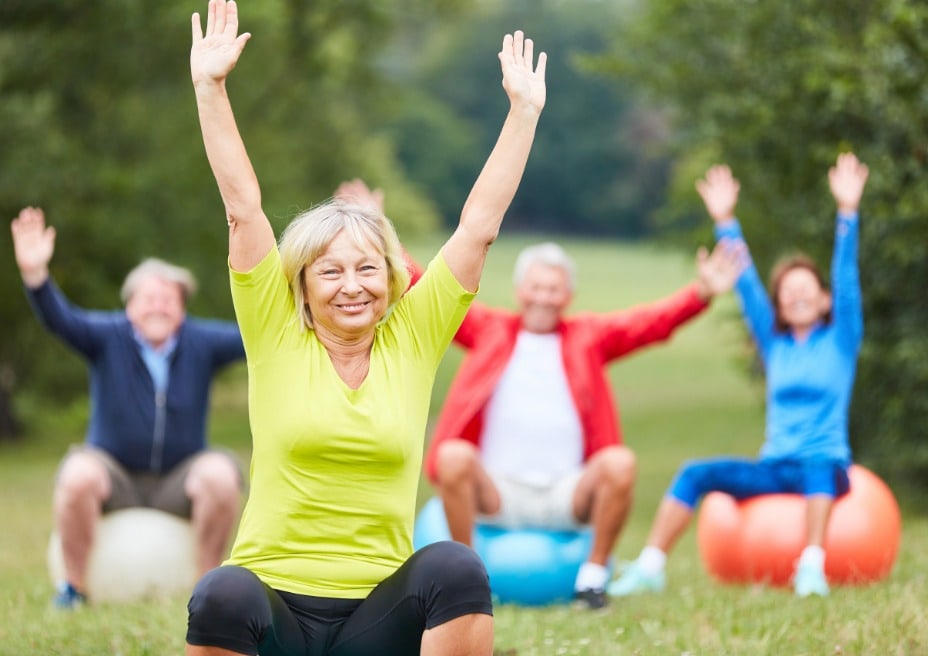
Here’s a great recent article on knee osteoarthritis to give you more background on this recommendation. And if you want more ideas, the CARs I teach in my Joints For Life program are a great all around joint care practice.
One more tip: if it’s knee OA, some studies have found that zero drop shoes can be beneficial, so consider transitioning your footwear and see how your body responds!
Common Issues & Links to Program Recommendations
Pain can be frustrating and scary but it doesn’t mean you have to stop living and doing the things you love. If you’re ready to get moving, here’s a helpful chart with links to the best program options to help with specific body areas:
| Feet | Knees | Hips | Pelvic Floor | Low Back | Shoulders | |
| Free Your Feet | ✔️ | ✔️ | ✔️ | ✔️ | ✔️ | |
| Ribcage Magic | ✔️ | ✔️ | ✔️ | |||
| Joints For Life | ✔️ | ✔️ | ||||
| Build Better Feet | ✔️ | ✔️ | ✔️ | ✔️ | ✔️ | |
| Pelvic Floor+ | ✔️ | ✔️ | ✔️ | ✔️ | ✔️ | ✔️ |
| Take10 | ✔️ | ✔️ | ✔️ | ✔️ | ✔️ | ✔️ |
And remember – pain is complex and movement is only one part of the solution. Don’t forget to look at other factors like stress, sleep and environmental that can also affect how our bodies perceive and experience pain.
Now put on your detective hat and get to figuring out what’s going on in your body!

